Anyone who pays close attention to small birds surely cannot fail to marvel at their hyperactivity, their agility, and how radically and swiftly their appearance changes.
From one nanosecond to the next, the very same individual can appear remarkably different in shape, colour, size…and attitude.
All photos feature New Holland Honeyeaters attending the very same Grevillea, adjacent to the eastern wall of a house in Walpole, in Western Australia’s “Deep South”.
Phylidonyris novaehollandiae is one of Australia’s most energetic and most widespread birds.
The name notwithstanding, this nectar-seeker also eats fruits, insects, and spiders; click here to discover more.
To my knowledge, however, the featured image’s ant did not become a crunchy snack.
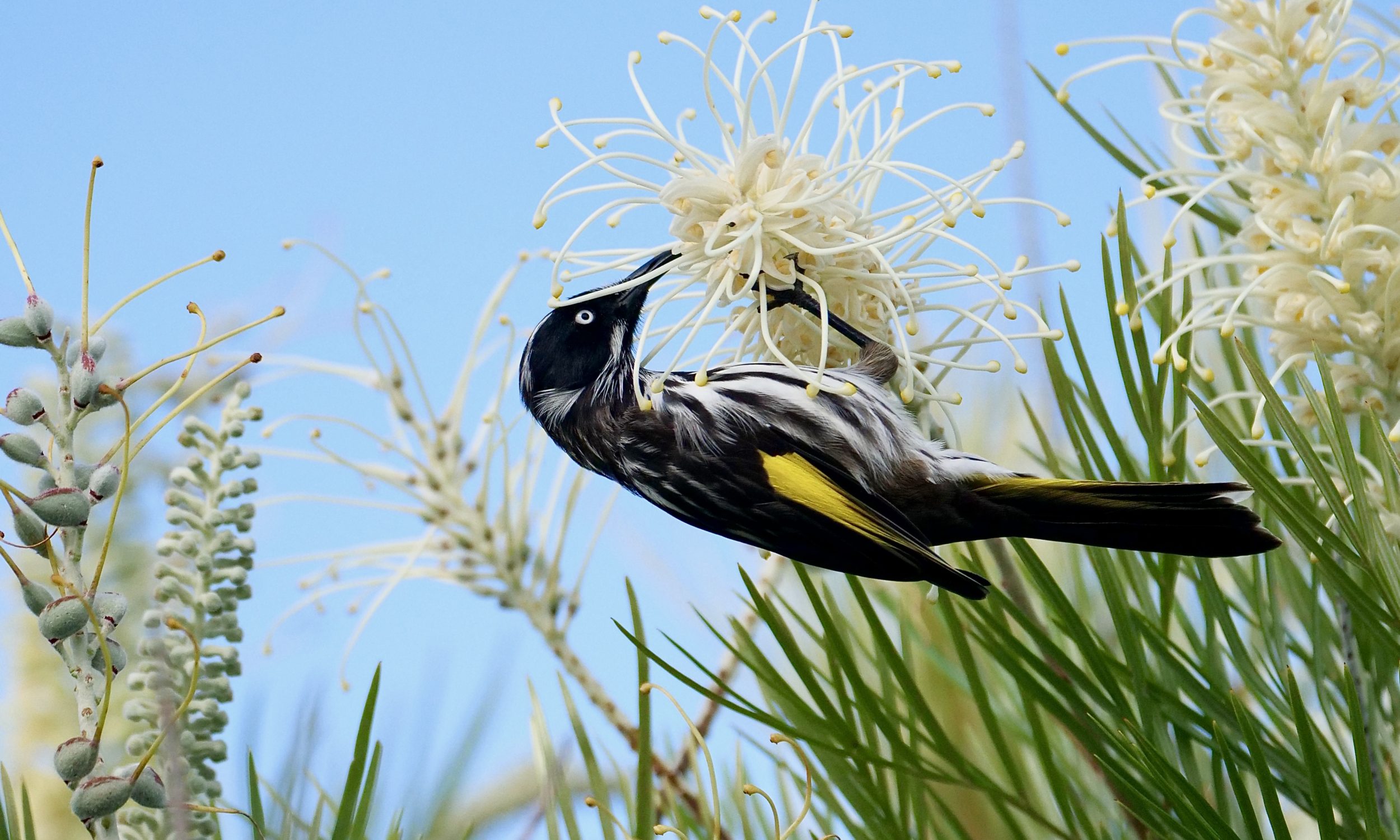
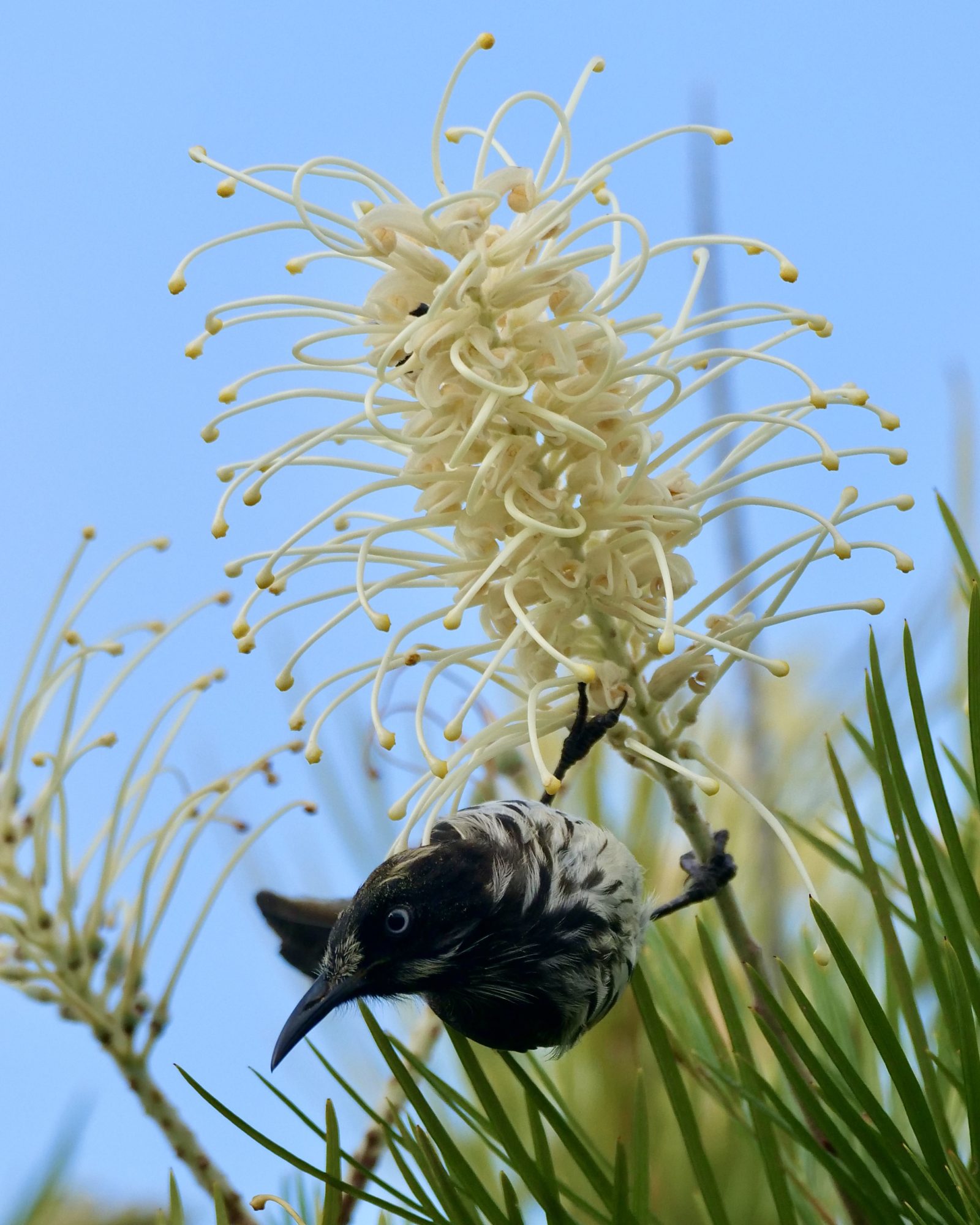
Until the arrival of high quality digital cameras, attempting to take many – or any – sharp, tolerably well-lit photos of honeyeaters in action was a very expensive as well as a very humbling pursuit.
It remains a humbling one!
That said, even far more able photographers than yours truly can attest that “the only way to take a single good photo of a busy, small bird is to take a lot of photos of said bird, knowing full well that you will/should then instantly discard rather more than 90 percent of them”.
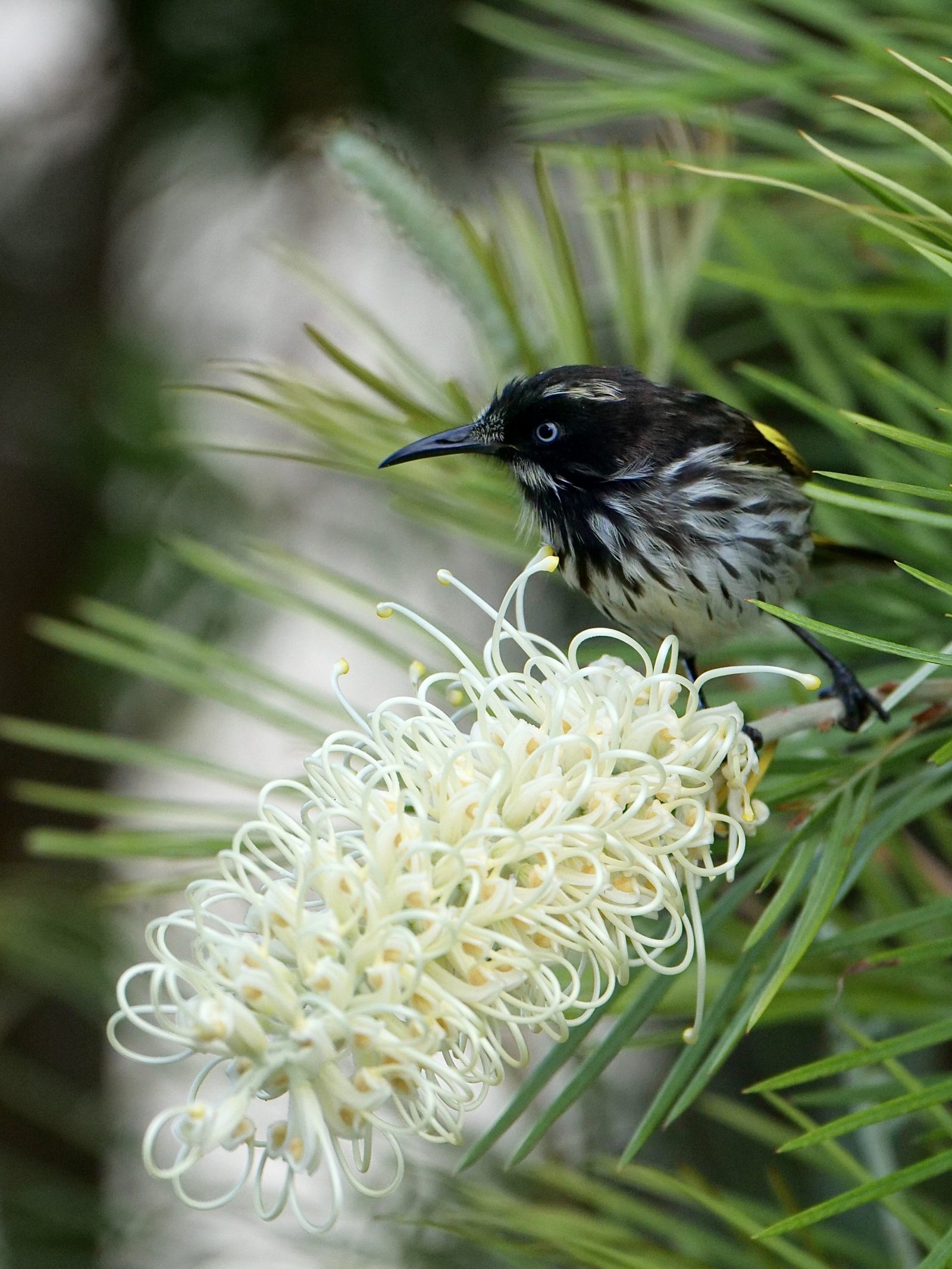
A few tips:
Be aware that no human eye can keep up with such birds; you need to “spray and pray”, as Georgina Steytler puts it; in other words, use “burst”, so your camera takes at least several images per second.
Have more than one charged battery on hand; wildlife photography can flatten a battery very quickly, most especially if you are using image stabilisation. (If you can afford it, you will discover that in-camera and in-lens image stabilisation, combined, are astonishingly helpful. Suffice that no image published on Pelican Yoga has ever involved a tripod)
You need a fast shutter speed – definitely not slower than one thousandth of a second. To make this possible in less-than-very-bright-light, temporarily increase the ISO by however much is necessary.
Manual focusing is pointless; auto-focus assuredly will not always manage to “keep up”, but its success rate will be higher than the alternative.
Be aware that you will need to adjust exposure, constantly; if the bird has bright sky behind it, you will need much more exposure than your camera’s light meter suggests. On the other hand, if you have the sun behind you and the bird is in front of – or within – dense foliage, you should probably give it a deal less exposure than your meter suggests.
And – most importantly – look directly into/through your camera’s viewfinder. You should always do this, whatever you are photographing, whenever. The single most effective tool to help you “lift your game, photographically” is to wean yourself off the camera back, and to “ look through the window, always”. If yours is a mirrorless camera, blessed with a good digital viewfinder, its display will give you some actual visual sense of how “right” or “wrong” is your current choice of exposure.
(and it will help you develop your compositional “eye” if you treat the window as if it were “fixed”; pretend that you are unable to crop the resulting image, and that you will be stuck with everything that is within the window frame. This little discipline will likely lead to you taking increasingly-better images)
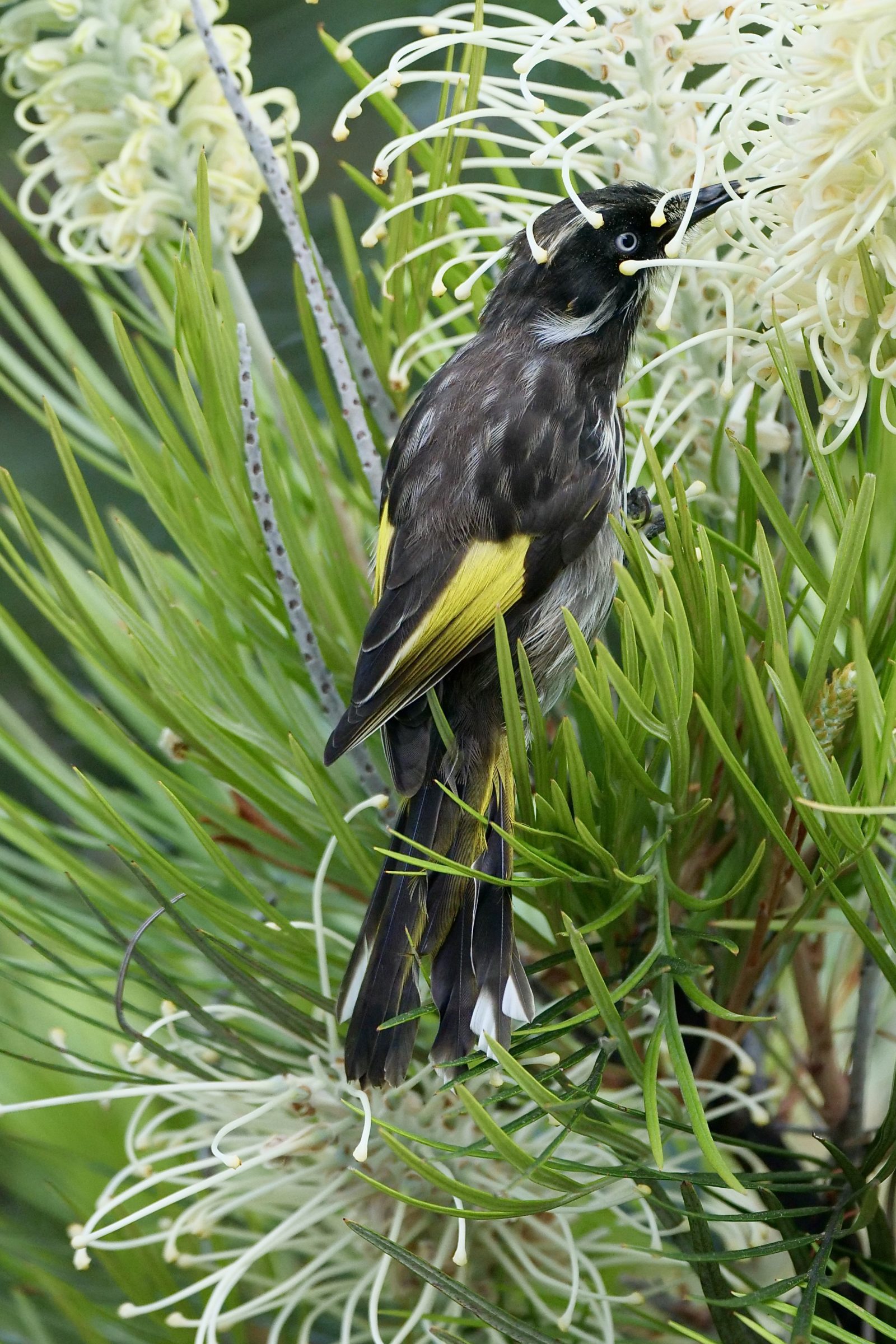
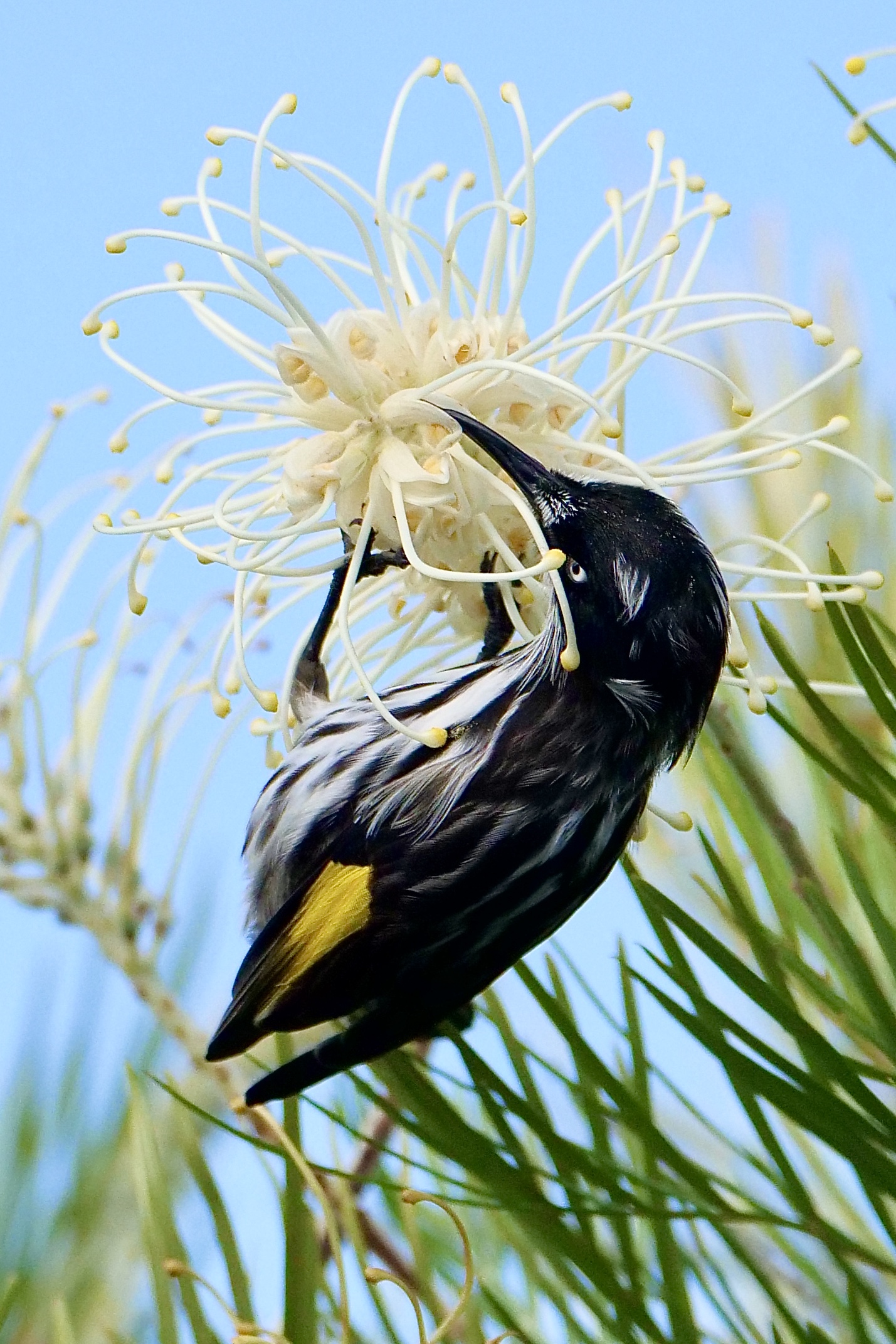
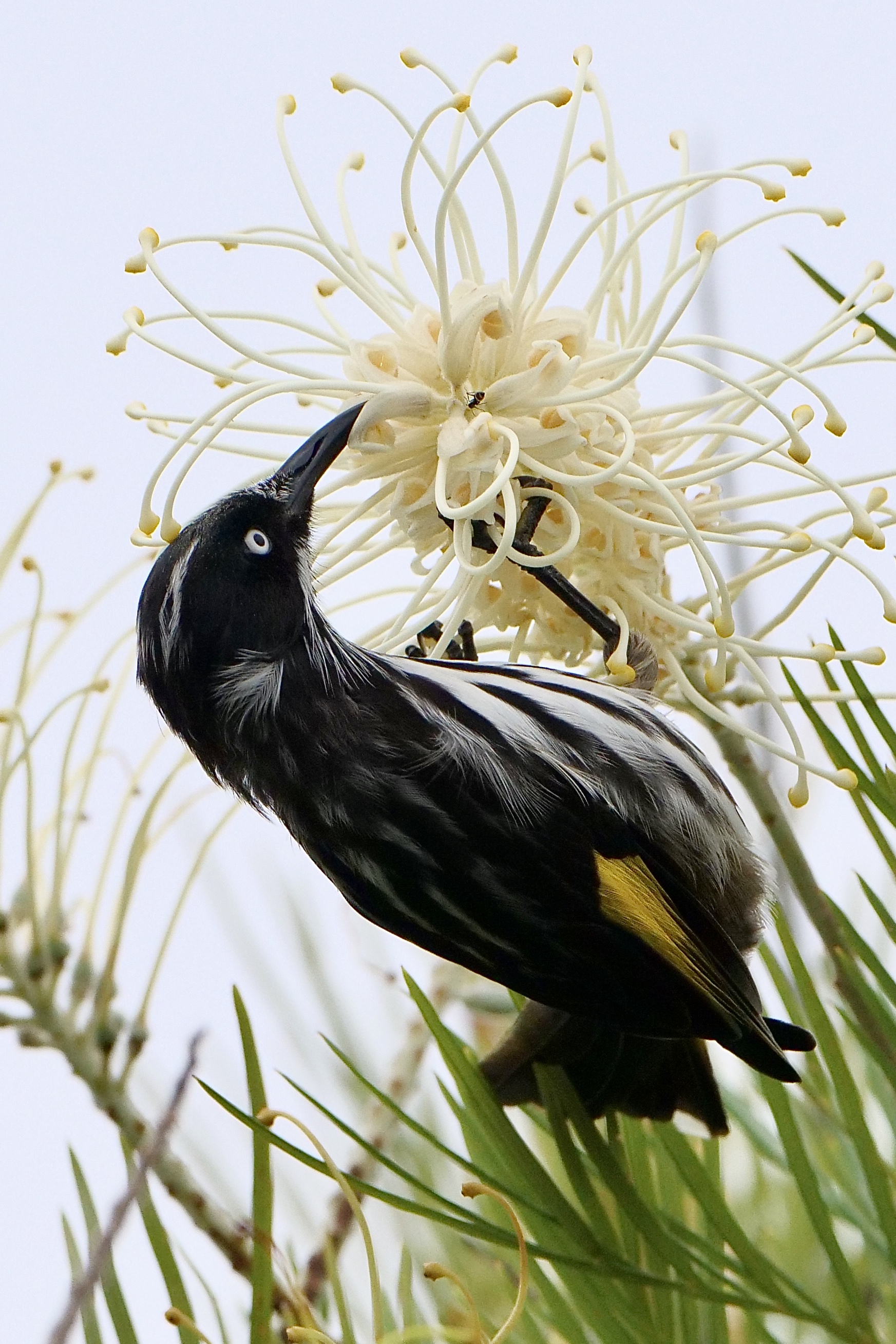
WOW! Stunningly clear photos of the Honeyeater and Grevillea. What a joy to behold.
Some good photography tips as well as good photography! Keep it up.
Stunning photos Doug!
Also many thanks for the brilliant photo advice!
[…] Trapeze with feathers, sans safety net […]